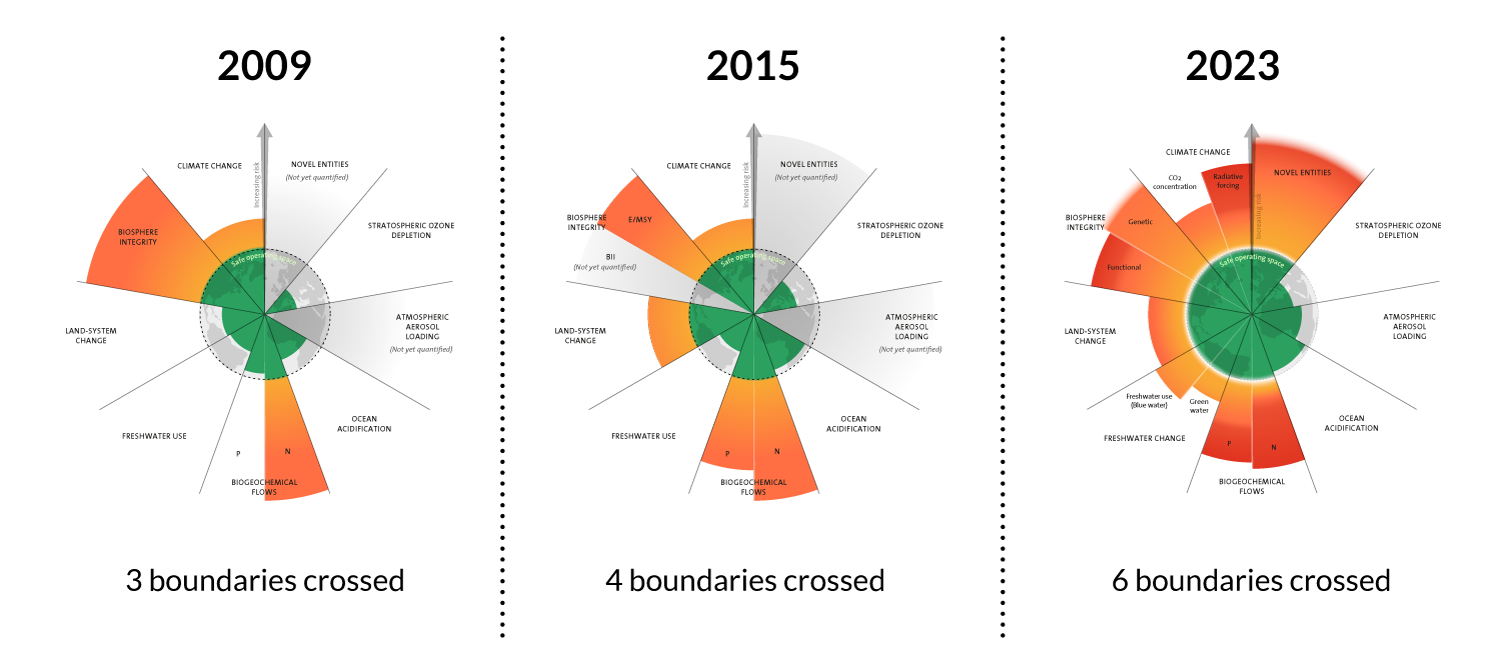One Minute On: #5 – Planetary Boundaries
Photo by Derek Thomson on Unsplash
The nine Planetary Boundaries are a set of thresholds within which humanity can survive, develop, and thrive for generations to come. They create a safe operating limit for survival.
In 2023, a team of scientists quantified all nine processes that regulate the stability and resilience of the earth. These nine planetary boundaries were first introduced by
Johan Rockstrom of the Stockholm Resilience Centre in 2009.
The headline is that six of the nine boundaries have been crossed.
Crossing these boundaries increases the risk of generating large-scale, abrupt, or irreversible environmental changes. Drastic changes will not happen overnight, but together, the boundaries mark a critical risk threshold for increasing risks to people and ecosystems we are part of.

Source: Azote for Stockholm Resilience Centre, Stockholm University. Based on Richardson et al. 2023, Steffen et al. 2015, and Rockström et al. 2009.
In more detail, the boundaries are:
- Stratospheric Ozone Depletion – the thinning of the ozone layer, which protects living things by filtering our UV radiation.
- Atmospheric aerosol loading – the increase of toxic and processed aerosols that harm health and the environment.
- Ocean Acidification – the increase of carbonic acid (from CO2 absorption) in the oceans impacting marine biological systems.
- Biogeochemical flows – the increase of the quality of nitrogen and phosphorus, which harm the environment rather than the natural process which supports plant growth.
- Global Water Use – the increase in freshwater withdrawals
- Land-system change – the transformation of natural environments into agricultural land.
- Biosphere integrity – the erosion of biodiversity, living things, ecosystems and species.
- Climate Change – the increase of greenhouse gas concentration in the atmosphere, often characterised by global warming.
- Chemical pollution and the release of novel entities into the biosphere – new chemical substances, nanomaterials and plastic polymers.

Source: “Azote for Stockholm Resilience Centre, based on analysis in Richardson et al 2023”